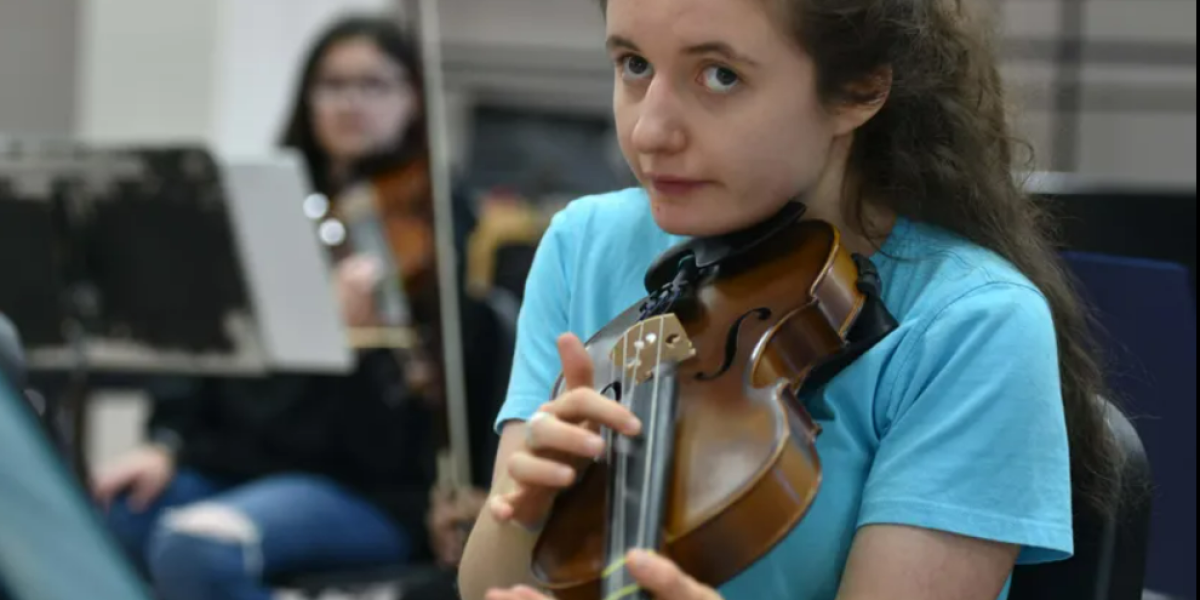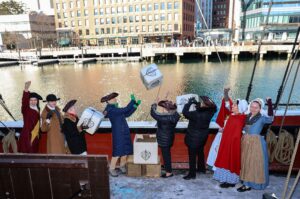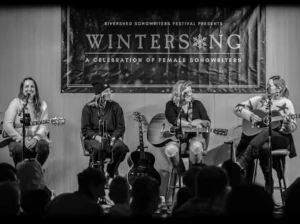CAPE COD TIMES – In the Barnstable High School music room, ninth-grader Anita Diaz pointed out the notes to “Mary Had a Little Lamb” with a violin bow, while her classmates played on their instruments.
Diaz, one of the twelve students with special needs joining the modern orchestra class, wasn’t playing the violin herself, but her enthusiasm and loud encouragement during the session clearly kept everyone energetic and motivated.
“The whole point of an orchestra is getting people to work, communicate and play together and that’s exactly what’s happening here,” Elijah Langille, orchestra director and music teacher at Barnstable High School, said.
This is the first year Barnstable High School has integrated special needs children into an orchestra class. The class has 20 students, including students with a range of special needs, general enrollment students, and students for whom English is not their primary language.
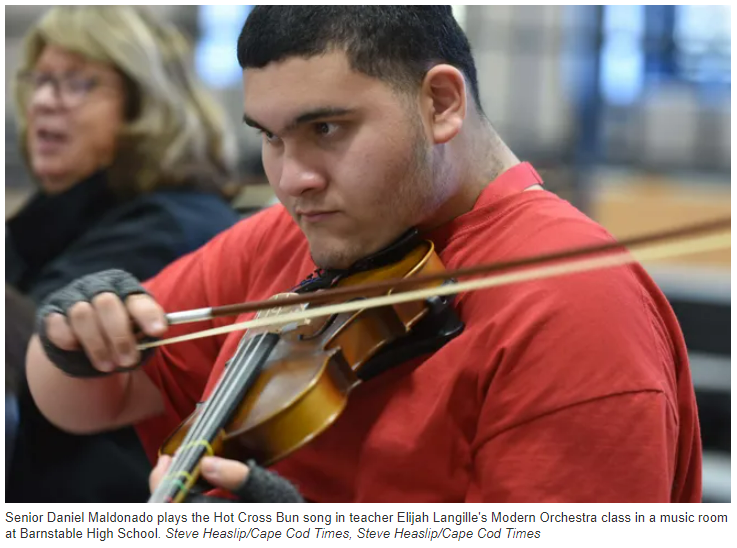
“It’s been absolutely amazing because we now have a class for everybody to learn together in a community,” Langille said.
In the integrated modern orchestra class, half the students identify as substantially separate, meaning they deal with more significant special needs and are part of the Barnstable Public Schools Foundation Program. The program provides students with disabilities access to the general curriculum, along with specialized instruction.
According to the Department of Elementary and Secondary Education, 16.5% of the students in Barnstable High School are students with disabilities and 30.4% of the students have a language other than English as their first language.
To prepare for the class, the high school bought musical instruments through a grant from the Enoch Cobb trust. Langille applied for the grant last year and in September the school was able to kick off this modern orchestra class for everyone.
Progress is evident at Barnstable High School orchestra class
Kyle Thomas, another special needs student, volunteered to play a violin solo every time Langille asked for a volunteer during the session. With the help of his aid, Thomas was strumming at the violin and later used the bow strings to play a song.
The active participation of the students is what keeps this class going and, according to Langille, they are progressing tremendously and well in line with the other general students’ orchestra class.
“If anyone had told me that these kids would be playing the violin in just two months, I wouldn’t have been so sure about it, but now when I see them actually play, it’s been absolutely amazing to witness,” said Justin Desorgher, a special education instructor at the high school.

Emma Linnell, another special needs student, sat in the front row of the orchestra. Though she was not playing any of the instruments, she calmly listened while her classmates strummed away.
According to Desorgher, Linnell is restless during most of her classes but during the orchestra class she calms down and quietly listens.
“It’s been so good to see the way that music really seems to touch everybody,” said Desorgher.
Integrated class helps students to thrive together
“Some of these students’ needs are so significant that sometimes they don’t even go to a class because they’ve got to get to their physical therapy or occupational therapy or maybe they have behavior issues,” said Desorgher.
But inclusion in the modern orchestra class allows these students to interact with other students, helping them build bonds essential to both their advancement.
Katherine Wing and Leah Desruisseaux, both freshmen, helped senior Daniel Maldonado play “Hot Cross Buns” Thursday. While Wing was helping Maldonado get the tunes right, Desruisseaux suggested he keep the violin right under his chin.
For both Wing and Desruisseaux, helping these students is important to develop essential skills.
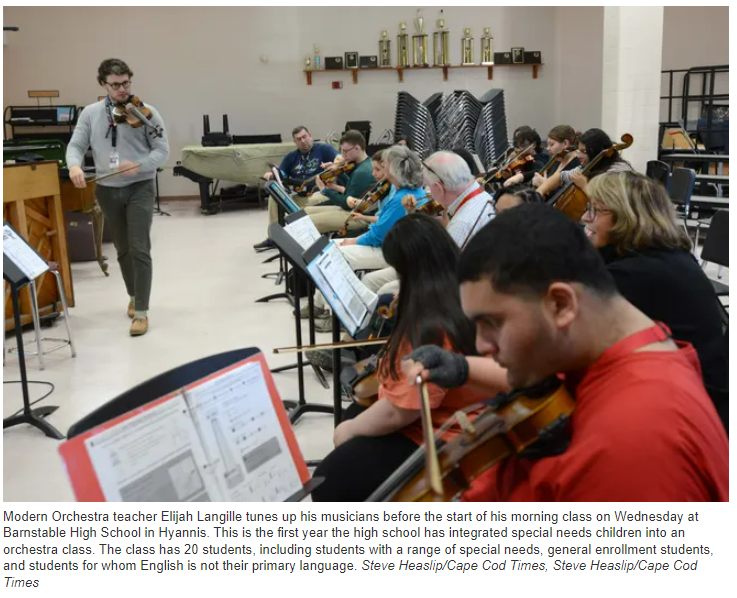
“I like coming in the class and helping them with their lessons, it gives you a sense of leadership,” said Wing, who’s been in the orchestra for five years.
Maldonado has formed a strong friendship with them, and they are hanging out regularly outside the classroom.
Some of the students without special needs have never interacted with students with disabilities.
There’s something powerful when you get a mix of general enrollment kids and special needs kids who are from different backgrounds, different countries to communicate together on the same level, said Langille.
The students are now having lunch together, and whenever they pass each other in the hallway they are communicating, said Langille. “I truly believe that an orchestra is supposed to bring people together to have a collective voice; a voice that is valid, truly beautiful, and has something to offer.”
By Rasheek Tabassum Mujib

